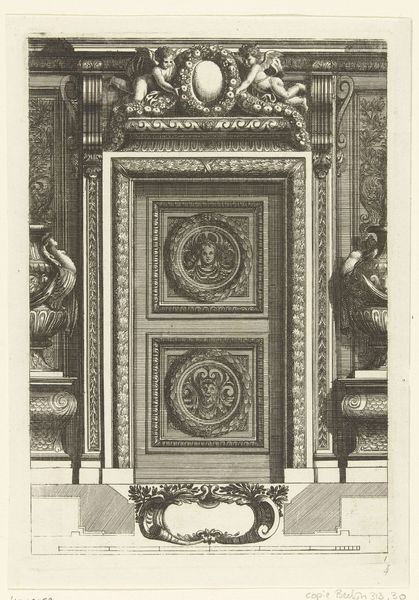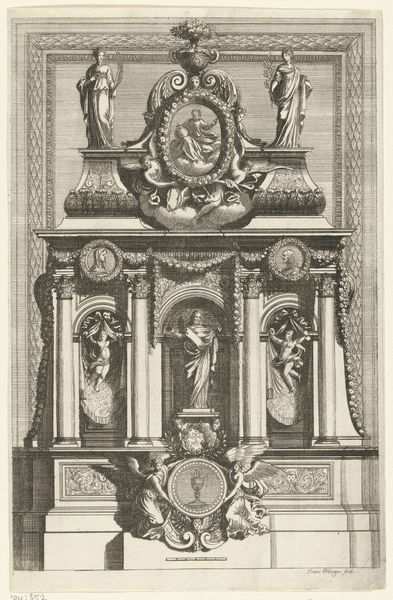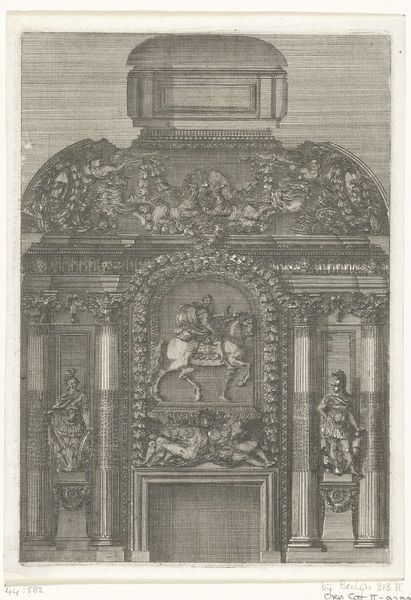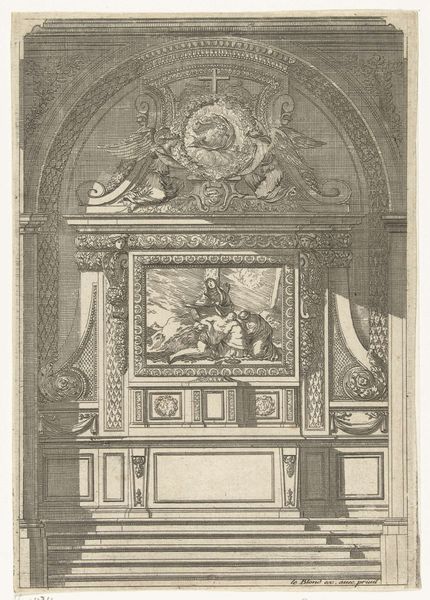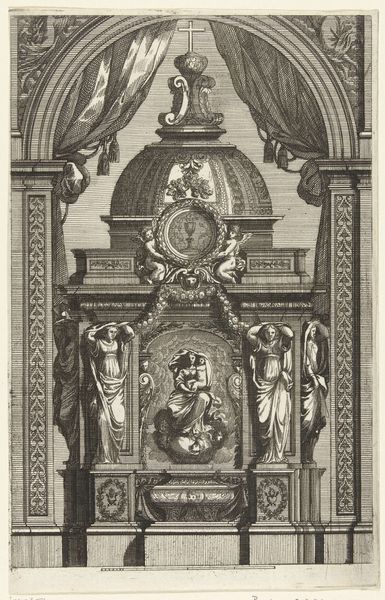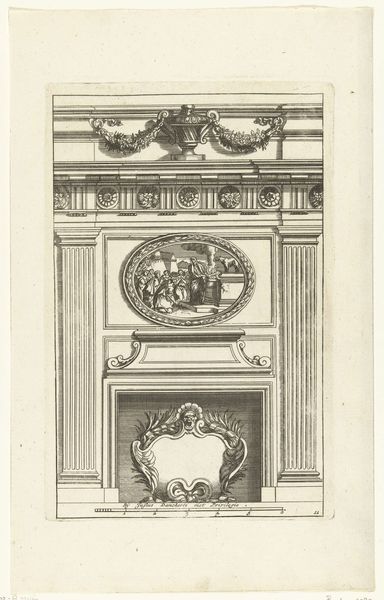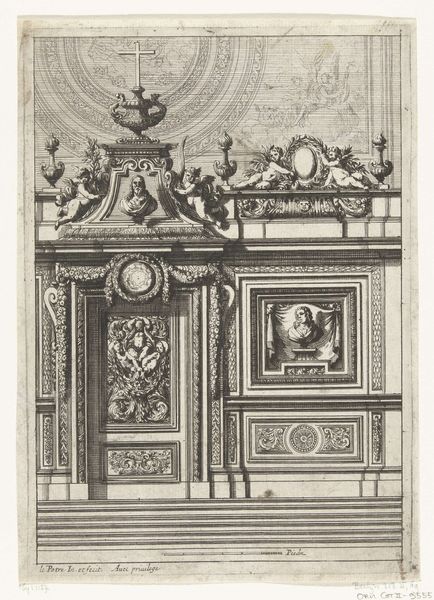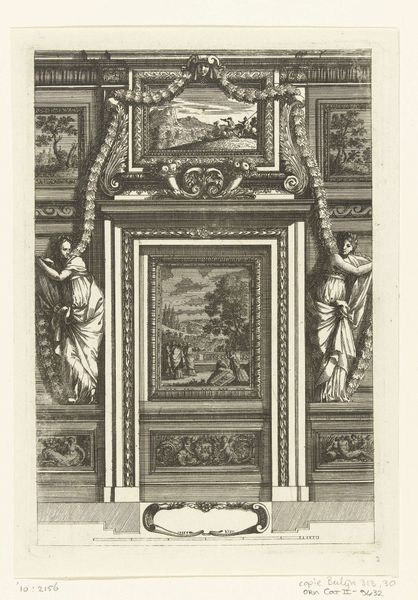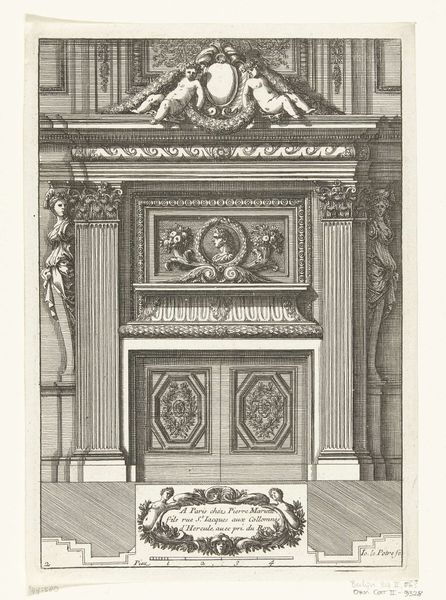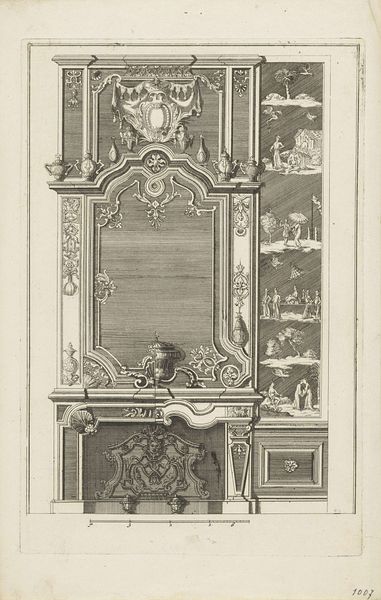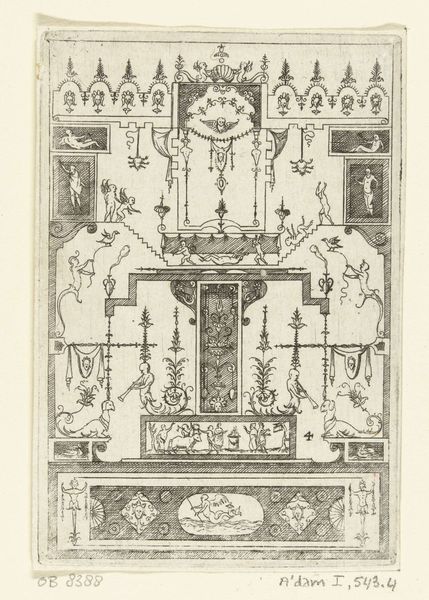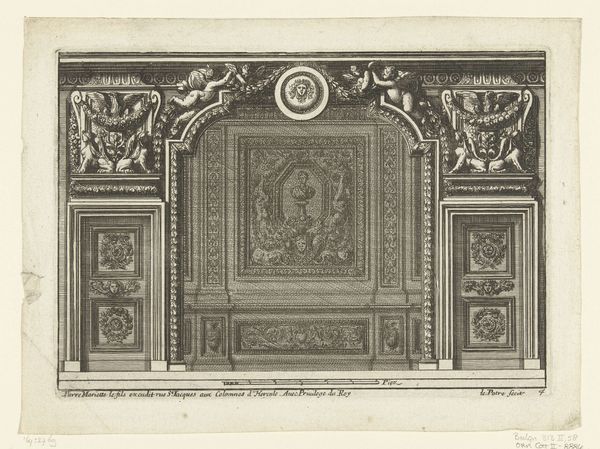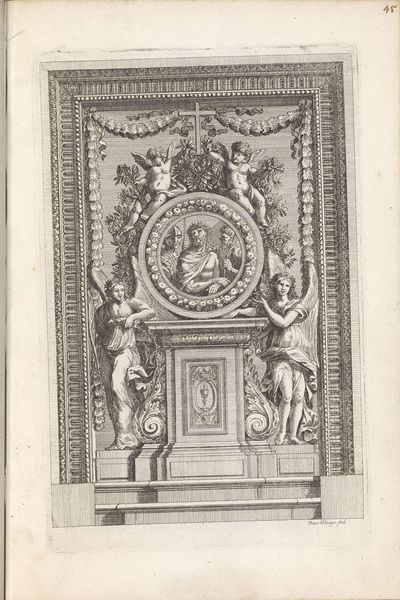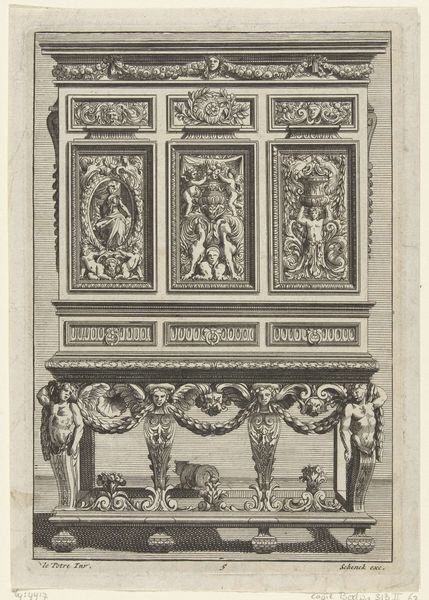
drawing, print, engraving, architecture
#
portrait
#
drawing
#
baroque
# print
#
form
#
line
#
engraving
#
architecture
Dimensions: height 207 mm, width 144 mm
Copyright: Rijks Museum: Open Domain
Editor: We’re looking at "Door Panel with Maskaron," made before 1678, an engraving by Franz Ertinger. It depicts an elaborately decorated door. The incredible detail, rendered just in lines, gives the design a really stately, almost intimidating presence. What’s your take on this piece, especially considering the time it was created? Curator: This engraving speaks volumes about the display of power and status in the Baroque era. The "mascaron," that grotesque face, positioned centrally on the door suggests warding off evil. Think of this not just as a door, but as a statement. Who had doors like this, and what did it communicate to visitors, to the public? Editor: So, it's less about function and more about conveying a message of status? Curator: Exactly. The symmetry, the classical figures flanking the door, the cherubs above - all symbols of wealth, refinement, and connections to classical ideals. This engraving makes that symbolism accessible to a wider audience, disseminating ideas about architectural style. Consider also the act of engraving itself: who commissioned this? How does this print serve them and the social structure of that period? Editor: It's fascinating how much social context can be gleaned from what seems like a simple door. Were these kinds of architectural prints common then? Curator: Yes, they played a vital role. Architectural prints, like this, acted as blueprints, aspirational imagery and forms of social currency for elite patrons and burgeoning builders. This served as templates to shape, promote and elevate urban spaces according to a distinct sociopolitical view. It speaks volumes about control of resources, taste, and public space in 17th century. Editor: I had no idea that a door could represent so much of a period’s cultural landscape. I definitely look at this differently now. Curator: And that is precisely the point: seeing how art functions as a key component in social dialogues across generations.
Comments
No comments
Be the first to comment and join the conversation on the ultimate creative platform.
